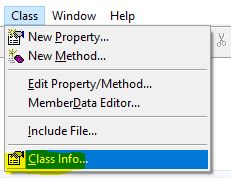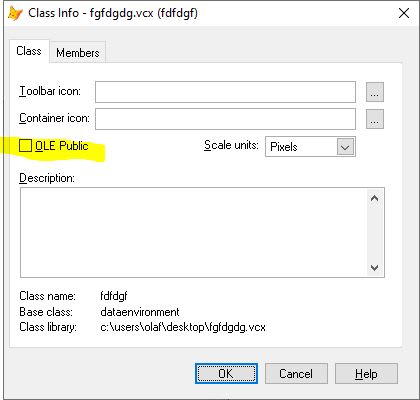I have created a com server exe program using a single PRG file
All is working fine -
However I want to expand the existing class with additional custom class objects
But I get an error "Class not found" or similar
For example this is the com server (abbreviated) - I can add a base class timer
If I create another PRG with a custom class:
Then try and add the class to the main class, I get an error class not found
All is working fine -
However I want to expand the existing class with additional custom class objects
But I get an error "Class not found" or similar
For example this is the com server (abbreviated) - I can add a base class timer
Code:
DEFINE CLASS serverStart AS custom OLEPUBLIC
ADD OBJECT timer1 as timer WITH ;
interval = 1000,;
enabled=.t.
PROCEDURE timer1.timer
this.enabled=.f.
this.parent.run_check()
ENDPROC
ENDDEFINEIf I create another PRG with a custom class:
Code:
DEFINE CLASS databasemanager AS custom
PROCEDURE getTablename
RETURN 'Found It'
ENDPROC
ENDDEFINEThen try and add the class to the main class, I get an error class not found
Code:
DEFINE CLASS serverStart AS custom OLEPUBLIC
ADD OBJECT timer1 as timer WITH ;
interval = 100,;
enabled=.f.
***********************************************
ADD OBJECT databasemanager1 as databasemanager
***********************************************
PROCEDURE timer1.timer
this.enabled=.f.
this.parent.run_check()
ENDPROC
ENDDEFINE

